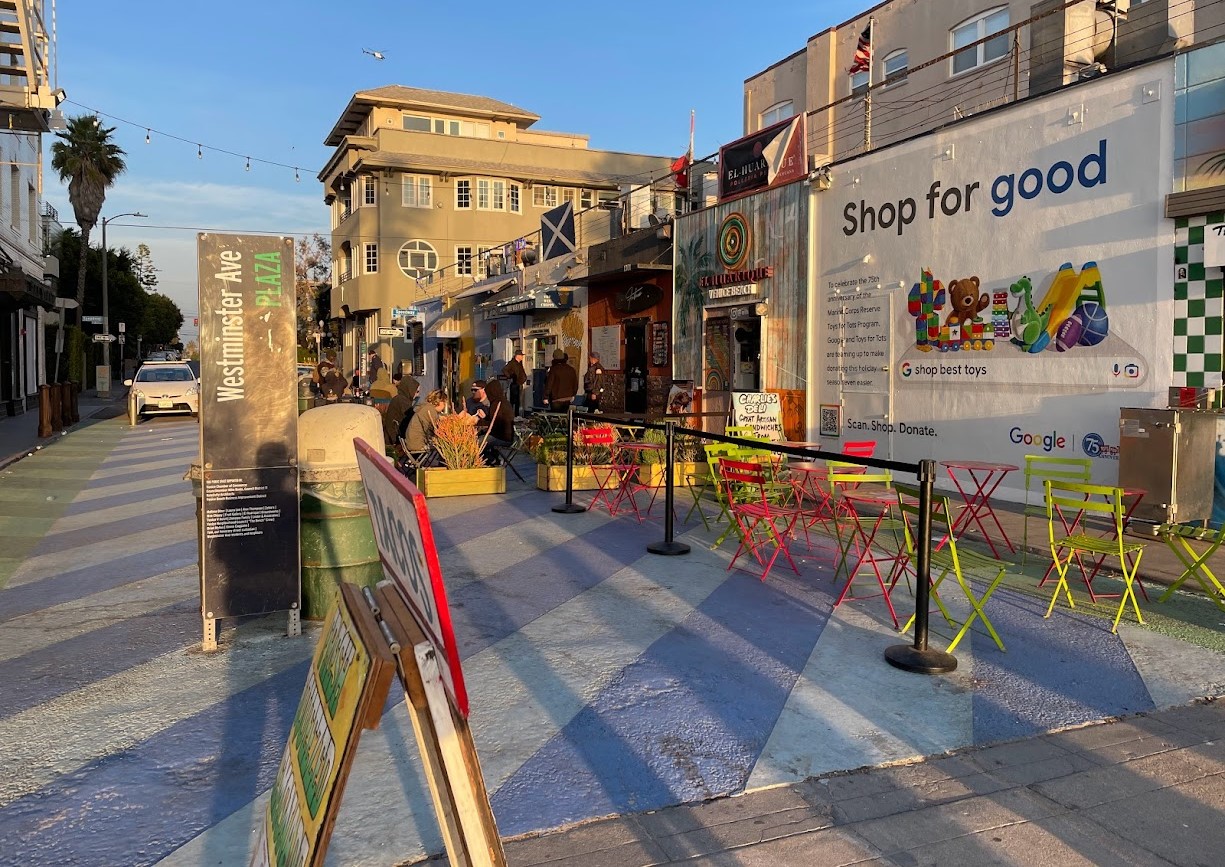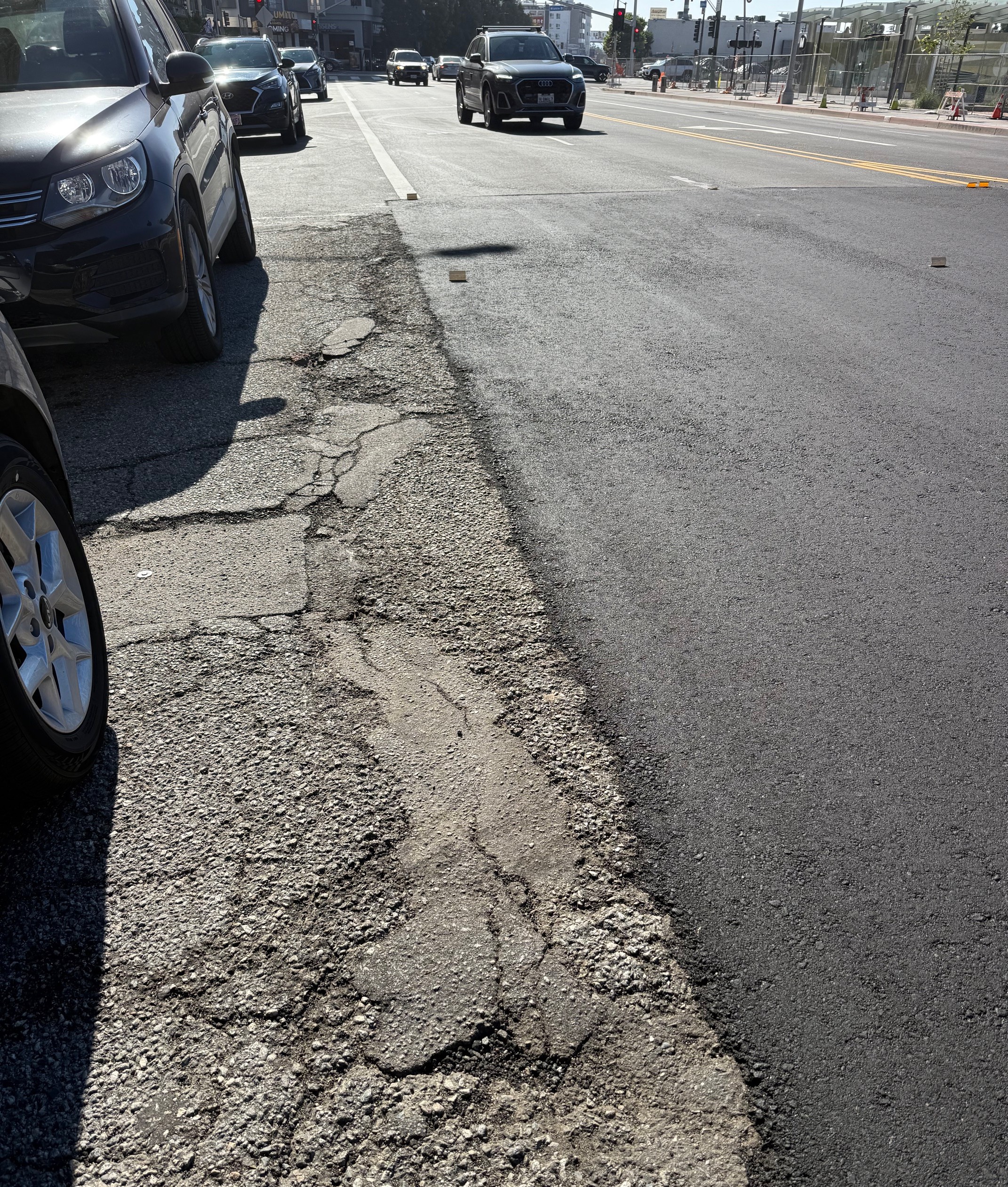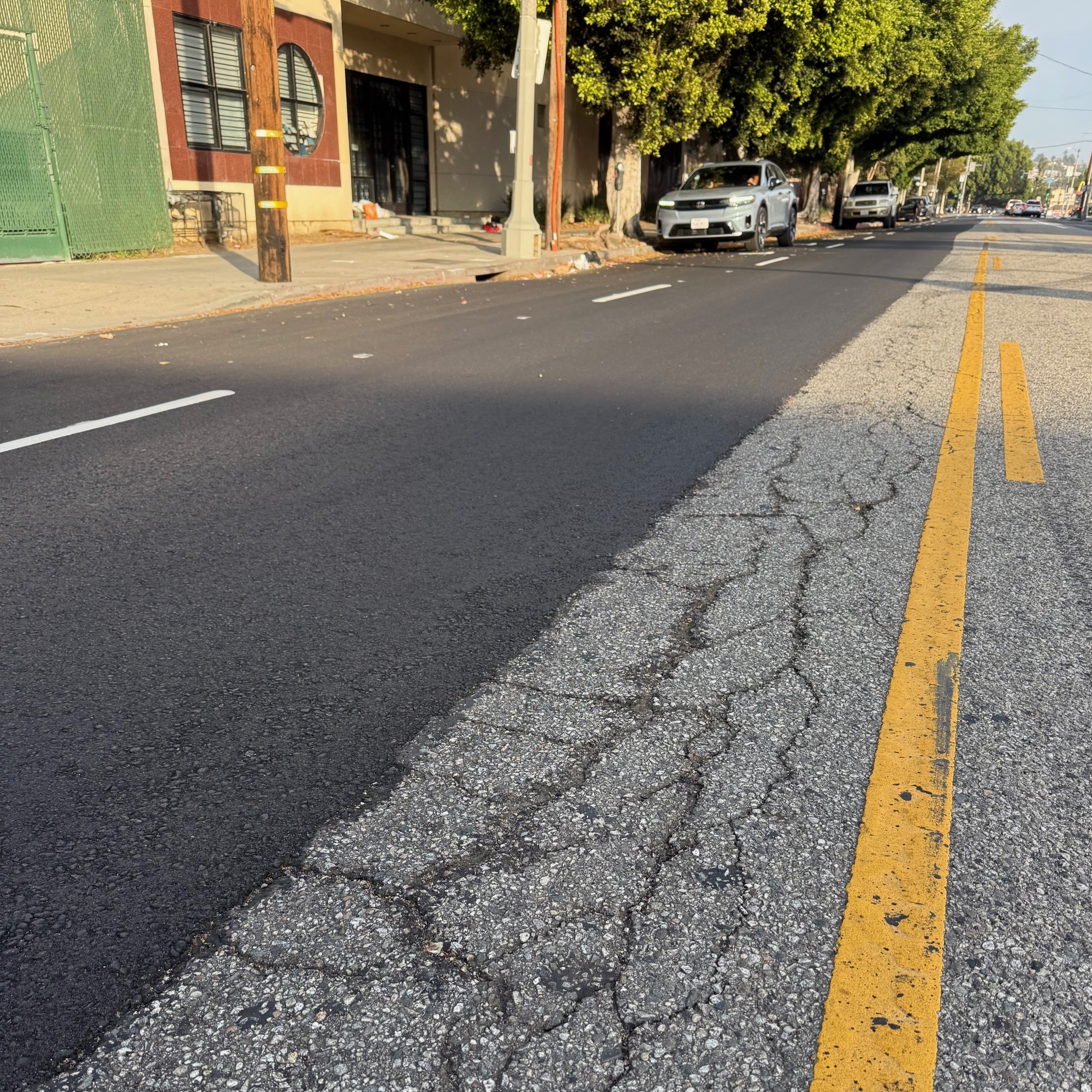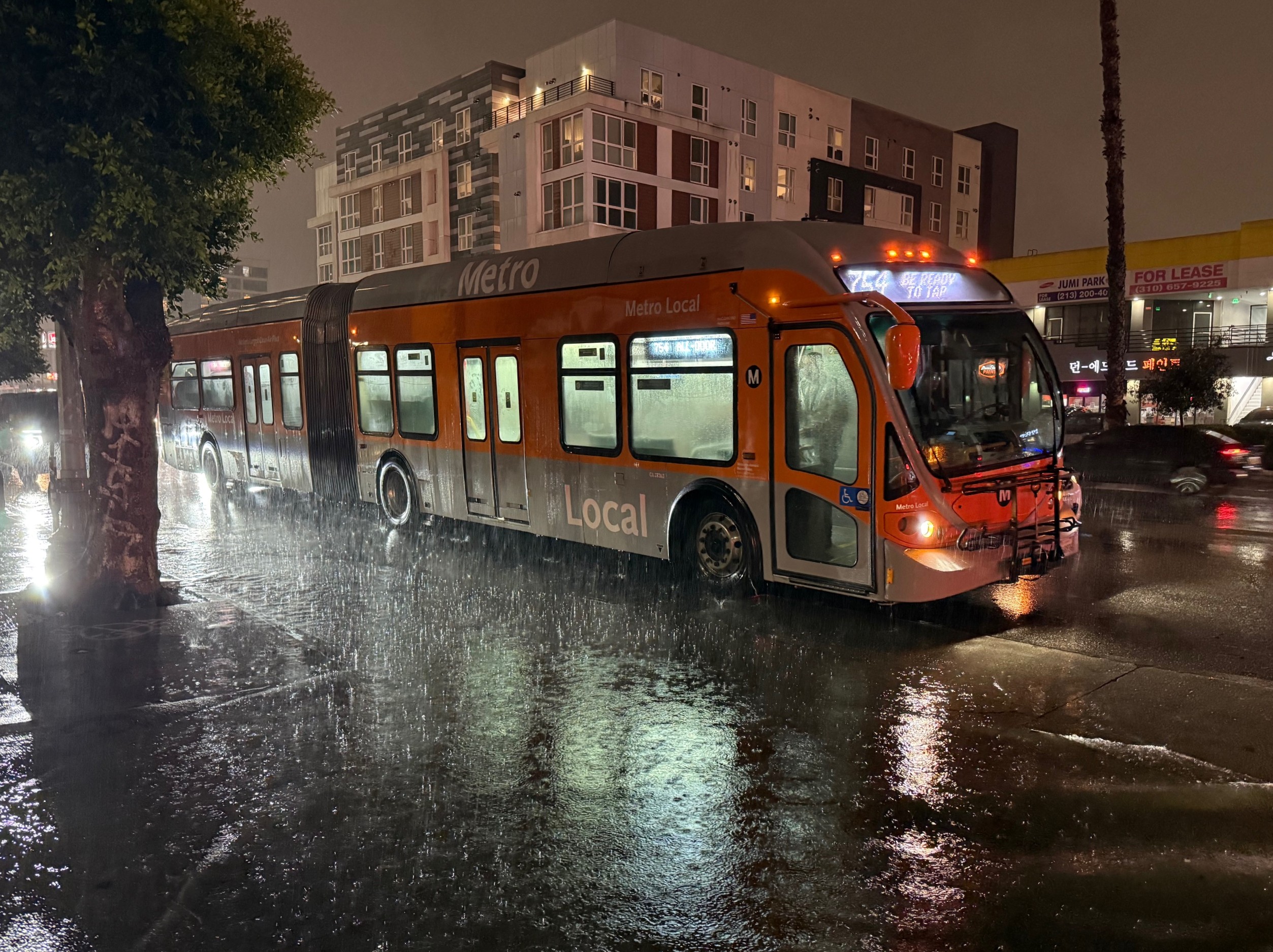New research from UCLA sheds light on the economic impacts and success of the temporary L.A. Al Fresco outdoor dining program. With temporary authorizations expiring soon and the city approving a permanent program, the burning question is, how will the last minute introduction of a one-parking-space requirement impact the future program's success?
As Los Angeles continues savoring the outdoor dining trend ignited by the COVID-19 pandemic, the city has been busy crafting a permanent recipe for the L.A. Al Fresco program. But before we raise our glasses to this al fresco affair, how do we gauge the true success of the outdoor dining program? And which generated more revenue - dining or parking?

These were just a few of the questions that prompted my recent research, “Dining or Parking? Managing the Curb During COVID-19 and Beyond: An Analysis of the L.A. Al Fresco Program”. Collaborating with urban planning professor and parking guru Donald Shoup, I conducted this investigation as part of my Master’s of Urban and Regional Planning degree at the UCLA Luskin School of Public Affairs. The city’s transportation department (LADOT)’s L.A. Al Fresco division served as the client for our research on behalf of the UCLA Institute of Transportation Studies. With the help of Senior LADOT Transportation Planner, Jaclyn Garcia, we gathered data to assess the impacts of the temporary COVID-era Al Fresco outdoor dining program. Our research compared revenue generated from parking meters and sales tax revenue from corridors with high levels of participation in the L.A. Al Fresco program. Based on this research, we found that the program was successful not only keeping businesses open during the pandemic, but also responsible for a $12 million increase in sales in study areas compared to pre-pandemic 2019. This generous increase in sales is attributed to restaurants increasing their floor space and dining capacity in lieu of parking with nominal costs to meter revenue.
Outdoor Dining in Los Angeles - the Basics
As Los Angeles faced the challenges of the COVID-19 pandemic, the city introduced the L.A. Al Fresco outdoor dining program to keep restaurants, bars, and cafes afloat during times of restricted indoor dining. By green-lighting the conversion of up to two on-street parking spaces and easing zoning codes, particularly off-street parking requirements, the program provided businesses the flexibility to extend their dining areas into metered on-street parking spaces and private off-street lots.
Since its inception in 2020, the program has granted nearly 3,000 temporary authorizations for curbside, off-street, and sidewalk dining, allowing businesses to enhance their revenue streams by expanding their commercial dining spaces beyond the confines of their establishments.
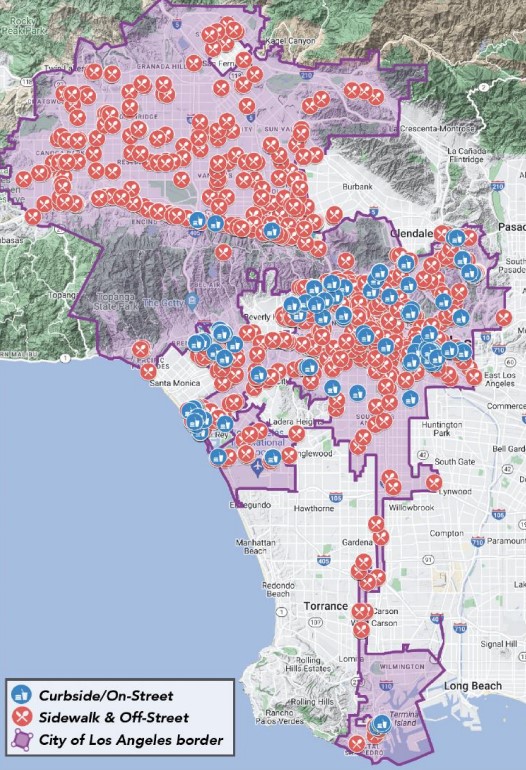
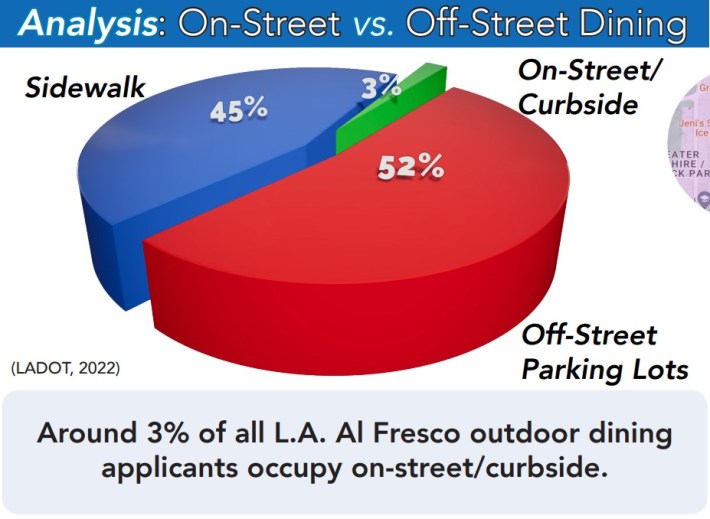
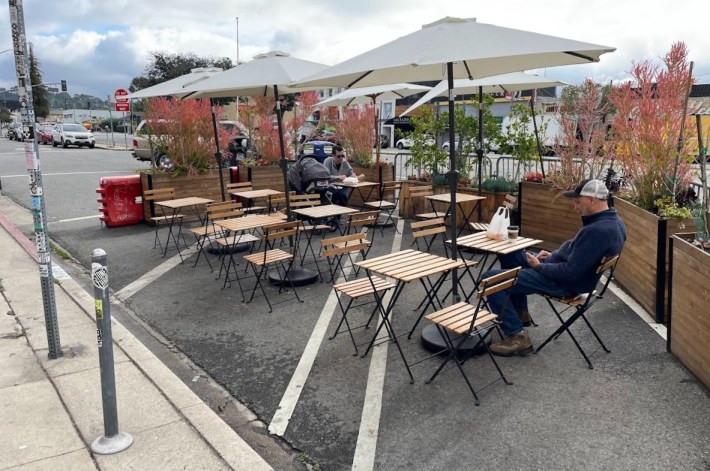
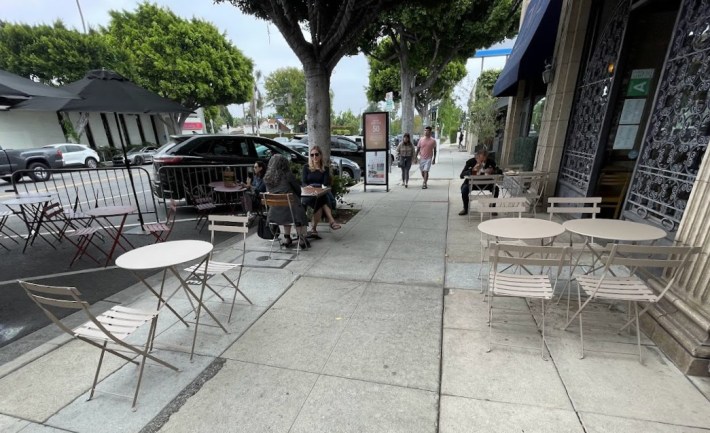
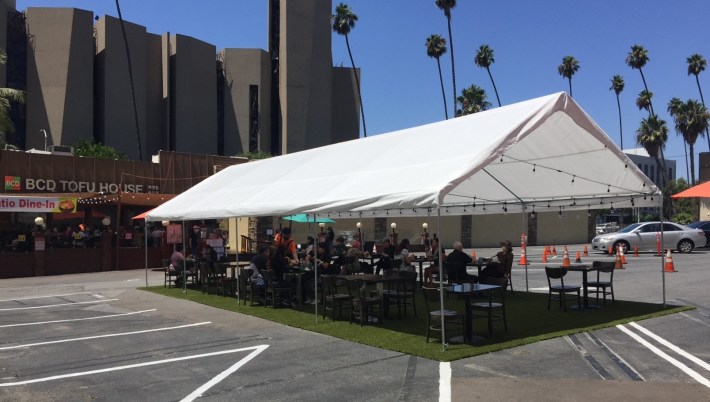
To gauge its true impact, a showdown unfolded between parking meter revenue and sales tax revenue, revealing which aspect delivered greater benefits for Los Angeles, its businesses, and its residents.
Westwood Village, home of the Bruins, emerged as an outdoor dining hotspot for al fresco enthusiasts since the pandemic. The walkable and transit-friendly Village witnessed a surge in outdoor dining as restaurants, bars, and cafes seized the opportunities offered by sidewalk, private lot, and curbside dining (seen below). A total of 16 curbside culinary havens, claiming 16 curb spaces, managed to dish out nearly $600,000 more in 2022 compared to their 2019 servings. In contrast, the same 16 parking meters clocked in at nearly $90,000 in 2019, hinting at the potential meter revenue casualties in the Al Fresco revolution.
“We pray that the Al Fresco program continues. The effects of not having it will be drastic on the business”, said Miguel Anaya, owner of Pinches Tacos in Westwood Village. Pinches, like many Al Fresco businesses, reported many positive benefits from the program, including increased sales, increased foot traffic, staff retention and customers who suddenly can’t imagine life without it.
Unlocking the city's economic chessboard, our research strategically pitted corridors with minimal Al Fresco vibes, such as Hollywood, against those boasting a lively curbside dining scene. The results? An outdoor dining extravaganza correlated with a triumphant economic uptick, showcasing boosted sales, increased foot traffic, and surprisingly, no significant impact on parking demand.
In Hollywood, where outdoor dining options were as rare as a blockbuster without sequels, sales took a 40% nosedive in 2022 compared to the pre-pandemic days of 2019. On the flip side, study areas adorned with a multitude of Al Fresco options, like Venice and San Pedro, were the stars of the show. Here, the sales tax stage witnessed an impressive encore, with a dazzling 60% and 70% increase, respectively, proving that in the economic theater, outdoor dining steals the spotlight.
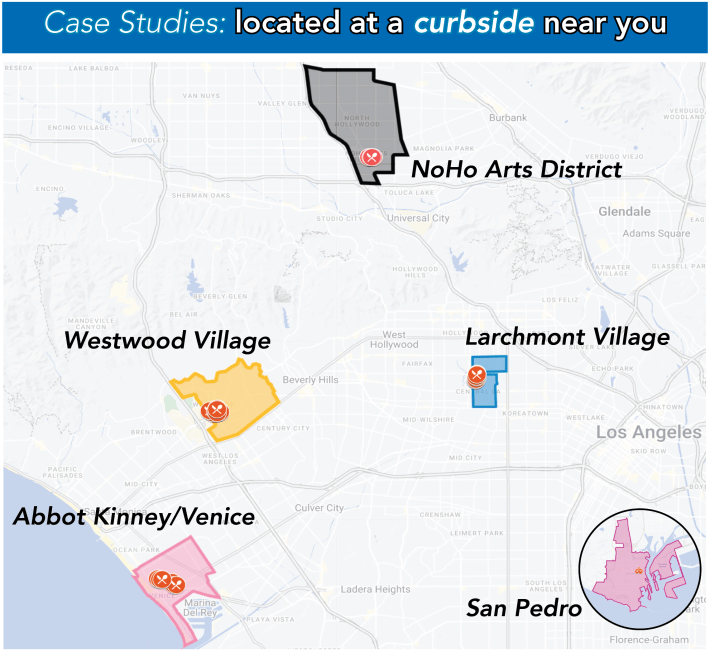
In the five case study areas with robust Al Fresco participation, a total of 52 curbside restaurants occupied 290 metered spaces, costing Los Angeles approximately $210,000 annually in potential parking revenue. However, the same restaurants generated a substantial $65 million in gross sales, marking a noteworthy $12 million increase compared to 2019’s pre-pandemic revenue. This surge in sales tax revenue easily outweighed the parking meter losses, showcasing the financial success of the Al Fresco program.
The Success of Relaxing Parking Minimums in the Zoning Code
The Al Fresco outdoor dining revolution in Los Angeles has not just reshaped streets and parking lots; it's transformed the very notion of how we utilize car-centric spaces for economic and social endeavors. Before the temporary Al Fresco program, the city lacked a framework to leverage on-street metered parking spaces and private parking lots for outdoor dining. While a sidewalk dining permit existed pre-Al Fresco, it never quite stole the show.
In the pre-Al Fresco era, zoning regulations dictated a parking space per 100 square feet of commercial space, resulting in a parking quagmire for businesses. Imagine a restaurant with a 1,000-square-foot dining area scrambling to provide 10 parking spaces. The solution? Often, businesses spread out, dedicating half their lot to diners and the other half to dormant cars overnight.
Enter the temporary L.A. Al Fresco program, breaking free from the shackles of parking minimums. Suddenly, businesses had the power to convert all their off-street parking into dining havens, nearly doubling their capacity. The result? A seamless blend of social and economic spaces, marking the parking minimums as a relic of the post-WWI automobile era and establishing Al Fresco as the undisputed star of the show.
Making Al Fresco Permanent
Due to the program’s popularity and success, last week the Los Angeles City voted to make Al Fresco outdoor dining permanent.
The final ordinance was intended to tie together existing permitted businesses, and create a streamlined process for new businesses interested in exploring sidewalk, curbside and off-street outdoor dining options. The permanent program is a joint effort between the Department of City Planning for zoning and off-street dining, Bureau of Engineering (BOE) for sidewalk dining, and LADOT for curbside/on-street dining. These functions are rolled into one cohesive program with a streamlined application process.
Throughout 2021 and 2022, the city received public input through community engagement, surveys, and public comments to the L.A. Al Fresco Council File (20-1074). Substantial feedback received played a crucial role in guiding the city's decisions on establishing a permanent outdoor dining program. The temporary program's simplified application procedure and the option to transform all off-street parking spaces into dining areas was widely praised by business owners and patrons alike. In early drafts of the permanent ordinance, the city proposed a new restriction, permitting only half of the required off-street parking to be used for dining. For example, a restaurant with 1,000 square feet of dining space would require 10 off-street parking spaces, and would be allowed to convert only 5 of those under an early draft of the ordinance. However, due to overwhelming public demand, one of the more recent drafts included the option for converting 100% of their off-street parking into outdoor dining.
The City Council Planning and Land Use Management (PLUM) Committee included a provision that requires businesses to include “at least one automobile parking space” if converting off-street parking lots into outdoor dining. With current authorizations under the temporary Al Fresco program set to expire on December 31, 2023, many recent public comments reflect the outrage and disappointment over this eleventh hour recommendation to mandate at least one off-street parking space.
George Francisco, Director of Policy and Planning for the Venice Chamber of Commerce, urged councilmembers to remove this requirement, calling it a “poison pill” that will complicate the application process. Francisco believes requirements like these will adversely impact restaurants in the Coastal Zone. Coastal areas like Abbot Kinney in Venice or downtown San Pedro have been very successful with both curbside and off-street Al Fresco dining as residents and visitors alike are able to enjoy a meal while taking advantage of California's beautiful climate.
Many comments from local small business owners also echoed concern over the proposed requirement to maintain at least one off-street parking space. “The addition of at least one parking space is NOT equitable. By requiring just one parking stall, we will be burdened with a much longer, more complicated, and more expensive permanent permit process”, said Joel Murphy of Marmalade Cafe on West 3rd Street. Many fear this requirement will burden the most vulnerable small businesses that have very limited outdoor space and may be unable to participate in the permanent program. The temporary program was born out of the need to keep local businesses afloat during a time that greatly impacted dining and retail so the fear of an arduous application process and added regulations do present valid concerns for small businesses.
The PLUM Committee approved the latest version on December 5. The full City Council approved it on December 8. The ordinance must now be signed by the Mayor and published for 30-days before taking effect.
Conclusion and Final Thoughts
In the culinary street chronicles of Los Angeles, the L.A. Al Fresco program emerged as the unsung hero of the COVID-19 pandemic, throwing a lifeline to restaurants and bars. Fast forward, and the temporary outdoor dining experiment has become the talk of the town, with curbside dining the most visible but least utilized outdoor option. Sidewalks were nearly half of all outdoor dining while off-street parking lots are stealing the spotlight as the most popular option; proving that sometimes the best meals come with a side of parking flexibility. By liberating restaurants from costly parking mandates, L.A. Al Fresco has turned the city into a walkable playground of possibilities, where doubling the people space means doubling the delight – both in taste and economic prosperity.
As Los Angeles savors the success of L.A. Al Fresco, transforming parking spaces into thriving community hubs, it's clear that the program has served up a feast of economic prosperity and vibrant social spaces. However, in the delicate balance between parking and dining, the 'one parking space' requirement may add a dash of uncertainty to this culinary revolution, potentially leaving small businesses with a bitter aftertaste. While the city navigates the fine line between progress and pragmatism, only time will tell if this flavorful experiment will continue to be a recipe for success or if reserving space for parking will have the final word in this al fresco affair.
Sources and further reading:
- City Council motion 20-1074-S4 at the Council File Management System
- L.A. City Planning Department webpage Al Fresco Ordinance - Outdoor Dining on Private Property
- My capstone paper: Dining or Parking? Managing the Curb During COVID-19 and Beyond: An Analysis of the LA Al Fresco Program
- LAMC § 62.118.2 - outdoor dining prior to permanent ordinance
- LAMC § 12.21 - minimum off-street automobile parking requirements
- Toronto’s Curbside Patios Made 49 Times More Money Than the Parking They Replaced at Strong Towns
Graham Rossmore is a Transportation Planner with LADOT’s Bureau of Parking Management. As a graduate of UCLA’s Master’s of Urban and Regional Planning (MURP), he focused on transportation policy and planning, including parking, curb management and active transportation. Graham lives in Hollywood, and serves as a volunteer board member on the Hollywood Hills West Neighborhood Council, where he bridges the gap between residents and local government to advocate for affordable housing, and local resources like water and utilities.
